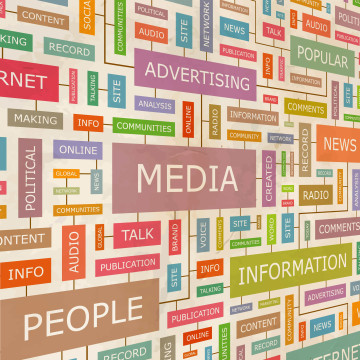Bishop: Not Much Difference Between Mainstream Media & Fake News
Thursday, December 22, 2016
Fake news is the flavor of the month. We’re being told that our attitudes are being shaped by Macedonian teenagers trying to make a buck. Indeed, Propornot, that paragon of journalistic virtue that blacklists its fellows while hiding behind anonymity reported to the Washington Post that Russian propaganda on the election was viewed some 213 million times . . . an incredible 1 time per registered voter.
But it gets worse, because it was really mostly seen by a regular audience of about 15 million who may have read 10 fake Russian spawned stories. If this starts to sound like a singing to the choir exercise you might get a little closer to what was going on. Of course some of the stories slanted left and some right, and some just plain out there, but the common thread is targeting folks with bits of fairy tales that confirmed what they already believed. Otherwise they would have been, you know, skeptical.
At the center of this storm of fake news, Russia Today, Putin’s homage to Madison Avenue, designed to put the PR bloom on the Russian rose. That would be the same network that today yields more hits in its archives for fracking than for Hillary. Atop the heap: fracking causes asthma – probably acne and autism too if you weed through enough of the site. Stories titled: “Wrecking the Earth”; and “People Should be terrified fracking is spreading” -- 882 hits and not one good thing to say about fracking. . . .
GET THE LATEST BREAKING NEWS HERE -- SIGN UP FOR GOLOCAL FREE DAILY EBLASTSo Russia has been working for 4 years to undercut America’s new energy self sufficiency and one of the country’s principle sources of economic growth following the housing bust and these paragons of journalistic virtue have had what, exactly, to say about that? Why wasn’t Russian fake news a household name before Hillary Clinton’s unexpected loss?
Ironically, it was Hillary Clinton in one of her wikileaked private speeches who tells an audience in Edmonton, Canada that : “We were even up against phony environmental groups, and I’m a big environmentalist, but these were funded by the Russians to stand against any effort, oh that pipeline, that fracking . . .”
But Russia did Hillary worse according to a ‘secret’ CIA assessment. They let the American people know what she and her team really had to say. And the only fake news involved were Hillary supporters trying to discredit the documents. Glenn Greenwald tells the case of a fabrication in which Marco Chacon invented an outlandish transcript of a speech purportedly delivered by Hillary to Goldman Sachs thinking to attract attention from some attaboy conservative web sites. And once it had circulated as an apparent part of the wiki-leaks trove, it would be exposed as a falsehood and thus sow doubt over all the documents in the wikileaks archive. And what conservative dupes did he rope in: MSNBC, the Atlantic and Newsweek . . . whoops.
Of course that reveals the real dangers of fake news, which is that you are just as likely to find it in the mainstream!
Indeed, some may recall the canard that the assault on our diplomatic compound in Benghazi was a spontaneous demonstration against an anti-Muslim video. When asked about her part in spreading this falsehood, Hillary famously replied: "What Difference . . . at this point .... what difference does it make". Funny how the media desires to throw Trump under the bus for downplaying the importance of whether the public may have been the least bit deceived during the election, but heaped accolades on Hillary for her brave defense of deceiving the public.
And you know, the CIA made her do it . The Russians indeed may not wish us well. But it can be equally hard to figure out whose side the CIA is on some times.
It is seldom hard to figure out whose side the mainstream media is on though. When announcing the Trump pick to lead the Environmental Protection Agency , Scott Pruitt, the Today Show couldn’t help but express incredulity that Trump could appoint the Oklahoma Attorney General since he was suing the agency (along with 24 other states whose AGs also presumably aren’t fit to run the EPA).
Really. It seems pretty unlikely that NBC would have thought one of the Attorney Generals of 12 states who sued in Massachusetts v. EPA to force carbon regulation had some kind of conflict that threatened their fitness for the office.
This doesn’t reveal that NBCs story was fake, but rather that it was slanted. Those who write and report the news for NBC believe that the only wrong EPA can do is not to be strict enough. The possibility that EPA could overdo it when taking up a ridiculously imprecise statute that commands them to regulate to a degree “requiste to protect the public healthy” is just not even on their viewscreen – so of course it won’t be on your TV screen.
The censors are ramping up to cure the internet of ‘fake news’, but Propornot offers absolutions, writing of their famous blacklist: “We are happy to remove any outlet whose operators understand how Putin's Russia is a brutal authoritarian kleptocracy that uses "fake news" as online propaganda, and resolves to help do something about it.”
The folks on their list don’t represent anything like the danger posed by those who made the list. We should be more concerned that some self-appointed Russophobes are setting themselves up as the arbiters of what we get to read about Russia. But of the most concern are the subtle biases of the mainstream media that will continue to be insulated from scrutiny. Not of a concern that there ought to be a law to stop it with some news police to enforce it; but of a concern that audiences ought to be skeptical and not imagine that they will just be spoon fed the truth by the Today Show or Russia Today.
Brian Bishop is on the board of OSTPA and has spent 20 years of activism protecting property rights, fighting overregulation and perverse incentives in tax policy.
Related Slideshow: 5 Reasons Why 2016 May Be the Most Chaotic Year Ever in Media
Related Articles
- Bishop: Calm Yorke More Outrageous Than Brash Trump
- Bishop: 38 Stabilizations - Neverending Prov Tax Giveways are 38 Studios Redux
- Bishop: The Soft Under Belly of Rhodeworks - A Connector to Nowhere
- Bishop: Post-Toll Impasse Between Public and Political Will
- Bishop: For Whom the Bill Tolls
- Bishop: Labor Piece Agreements . . . as in Piece of The Pie
- Bishop: Hitchhikers Guide to Vaccine Mandates
- Bishop: Constitution Day at Brown - What’s the State of Our More Perfect Union?
- Bishop Tobin: Catholic Church Had “No Choice” in Firing Gay Music Director
- Gencarella & Bishop: Political Football v Public Safety
- Bishop: Trump for President
- Bishop: Sleepy South County or Races That Matter?
- Bishop and Fired Catholic Music Director Get Into Media War
- Bishop: 6/10 Connector - The $800 Million Mile
- Gencarella & Bishop: Billion Dollar ‘Big Dig’ - Fewer Bridges, Fewer Cars, Nearly Double The Cost
- Bishop: Revolutionary Providence Primaries
- Bishop: It Takes [The] Village [People]
- Bishop: Structural Changes to Address Structural Deficit
- Bishop: Welcome Joe Biden, to Roads That Don’t Work
- Bishop: Tax [Breaks] and Spending












